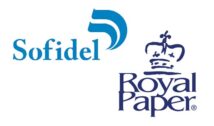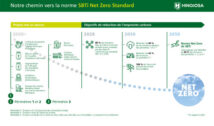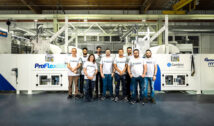
On July 3, 2020, Jahan Golestani defended her doctoral thesis of the Université Grenoble Alpes, prepared under the supervision of Professor Christine Chirat and of Emeritus Professor Dominique Lachenal (Grenoble INP-Pagora / LGP2).
She presented the results of her research work entitled Process for the purification of cellulose from wood by coupling enzymatic and chemical reactions.
Nowadays, applying clean technologies is in the center of attention in different industries in order to decrease the release of pollutants in the environment. Maximizing the revenues of a production line by valorizing the value-added precious side products is also looked for. In the case of the cellulose industry, valorize all the wood components instead of burning half of the wood content with the black liquor would improve the economy model of the mills and ensure their perennation in some cases. Kraft pulping is the dominant pulping method producing paper-grade pulps.
Among various current and potential value-added products in pulp and paper industry, hemicelluloses are of the important ones, as they represent up to 30 % of wood mass, and up to now they have not been valorized except for the production of energy. There are two ways under study by several research groups to have access to hemicelluloses when considering the kraft process: either they can be partially extracted by an autohydrolysis process prior to the kraft cooking, or they could be extracted from paper pulps which still contain from 15 to 30% of hemicelluloses.
This thesis focuses on the extraction of hemicelluloses from bleached paper pulp by using enzymes alone, or in combination with cold caustic extraction. The objective is to extract rather pure hemicelluloses in their oligomeric form for a possible future usage as prebiotics for example. Acidic processes are thus excluded as acid hydrolysis is prone to depolymerize oligomers to monomers and to degrade sugar monomers into furans. Acidic process could also degrade cellulose. The advantage of using enzymes is that pure hemicelluloses should be obtained, as enzymes are selective. The choice of bleached pulps as raw material should ensure to have access to purer hemicelluloses than from an autohydrolysis process: indeed, bleached pulp do not contain lignin any more, and hemicelluloses in bleached pulps should be free of acetyl groups, and only few uronic acid groups should remain.
The enzymes studied are xylanase and mannanase which have already been tested in the pulp and paper industry as bleaching boosting agents. But still there are many challenges in applying hemicellulases to valorize hemicelluloses from kraft pulps, among them the limitation in the extraction of remained hemicelluloses is of critical ones, which is why we will also study a combination between enzymes and a CCE treatment. The study is divided into two parts: the first part will investigate the effect of the two enzymes on bleached softwood and hardwood pulps, in combination or not with CCE, and the second part will study the structure of the oligosaccharides extracted.
RELATED NEWS
New Strategic Partnership for GAW technologies in France
April 4, 2025
Andritz to acquire A.Celli
April 3, 2025
CEO of Metsä Board Corporation to change
April 2, 2025
Roquette Receives the Ecovadis Gold Medal
April 2, 2025

































